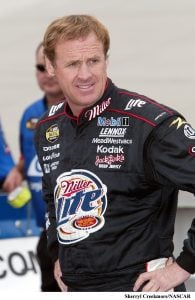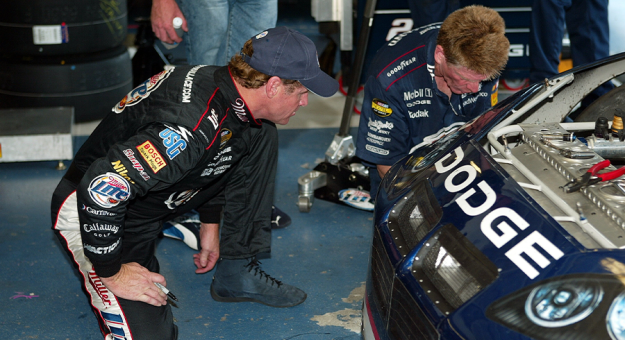NASCAR’s 75 years of rich history is packed full of moments that will be talked about for generations.
While championship races and photo finishes spring to mind, there are also some obscure moments that fill in the gaps.
One in particular that fits in its own category happened to be a test session in 2004 at Talladega (Ala.) Superspeedway.
With Nextel onboard as the series’ title sponsor, NASCAR Hall of Famer Rusty Wallace was tasked to help them improve radio communications at higher speeds.
The only way to reach that goal was to remove his engine’s restrictor plate. Restrictor plates were implemented in 1988 in an attempt to slow speeds at Talladega and Daytona (Fla.) Int’l Speedway.
Wallace was all over the opportunity.
Heading to Talladega on June 9, 2004, Wallace was the lone driver at the test session.

“So we went down there and we pulled the restrictor plate off to a different size, and it ran 199 mph. “I said, ‘We really need to run 200,” Wallace said.
“So they said, ‘God darn, we brought the wrong restricted plates. We brought smaller ones, we didn’t bring bigger ones accidentally.’”
What’s an easy solution? Simply take the plate off all together.
“I was like, ‘Oh my God, look, let’s take the damn thing off. Let’s see what happens.’”
While Wallace was ready to push his No. 2 Penske Racing Dodge to the limit, the organizers of the test were hesitant at first.
“So they look at me like, ‘Oh s–t, I don’t know if we can do this or not. The bosses might be mad. We might get fired over this one. Well, I don’t know.’
“So I said, ‘Just do it. I’ll cover for you.’ I took the damn restrictor plate off the car,” Wallace recalled. “I went out there. Now I’m running 199 miles an hour. OK? I took the restrictor plate off the car.”
While published reports cite Wallace running a top speed of 228 mph and an average of 216.309 mph around the 2.66-mile superspeedway, he remembers it differently.
“On the first lap, the car came past the start/finish line at 241 miles an hour,” Wallace beamed. “That made an average lap at 238, before the right-front tire started vibrating.
“I came down pit road in a brand-new set of tires, ran one lap, and it tore all the rubber off the right-side tire because we were going so damn fast.”
Wallace unofficially obliterated the track record set by Bill Elliott in 1987, when Elliott recorded a best lap of 212.809 mph in qualifying.
“I ran 241 max speed, 238 average, and that was all the way back then,” Wallace said.
“Can you imagine what they could do now?”
With the technology NASCAR teams utilize today, the mere thought of what’s possible 19 years later is nothing short of ludicrous.
